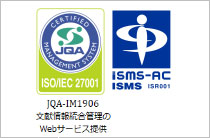ホームIMICライブラリMMWR抄訳2013年(Vol.62)バイタルサイン:10代の再出産 -アメリカ、200・・・
2013/04/05Vol. 62 / No. 13
MMWR62(13):249-255
Vital Signs: Repeat Births Among Teens - United States, 2007-2010
バイタルサイン:10代の再出産 -アメリカ、2007~2010年
2010年のNational Vital Statistics System (NVSS)データによると、アメリカ50州およびワシントンDCにおける15~19歳の出産数は364,859、うち66,761(18.3%)は再出産(20歳前の2回以上妊娠、出産)であり、再出産率は2007年:19.5%から4年間で6.2%低下した。第2子の出産が最も多く(57,206、85.7%)、第3子(8,397、12.6%)、第4~6子(1,158、1.7%)であった。人種/民族別ではアメリカインディアン/アラスカ原住民:21.6%、ヒスパニック系:20.9%、非ヒスパニック系黒人:20.4%、アジア/太平洋諸国系:17.6%、非ヒスパニック系白人:14.8%の順であり、州別ではテキサス州が最も高く(22%)、南部および西部の8州(アリゾナ、アーカンソー、ジョージア、ルイジアナ、ミシシッピ、ネバダ、オクラホマ、テキサス州)が20%を超えており、ニューハンプシャー州が最も低く(10%)、北東部の7州(コネチカット、メイン、マサチューセッツ、ニューハンプシャー、ニューヨーク、バーモント、ワイオミング州)が15%未満であった。また、Pregnancy Risk Assessment Monitoring System (PRAMS)データ(15州およびニューヨーク市)に参加した出産後の10代の母親の性的活動は、活動的:90.7%、非活動的:8.0%、妊娠中:1.3%であり、活動的と回答したうち91.2%が最後の出産後、避妊していると回答した。避妊の方法は高効果受胎調節法(卵管結紮、精管切除、インプラント、子宮内避妊器具):22.4%、中等度効果法(経口避妊薬、静注メドロキシプロゲステロン、妊娠調節パッチ、避妊リング):54.2%、低効果法(コンドーム、ペッサリー、子宮頸部キャップ、避妊スポンジ、周期避妊法、膣外射精):14.5%であった。10代での出産は母子ともに健康的、経済的、社会的に負の影響をもたらし、母親の教育および就職の可能性を低下させるものである。今回の結果から、10代女性における再出産率は低下しているが、依然として約1/5が再出産であり、産後の避妊が十分でないことが示され、今後、家庭訪問などの支援体制やカウンセリングの強化が必要である。
References
- Martin JA, Hamilton BE, Ventura SJ, Osterman MJK, Wilson EC, Mathews TJ. Births: final data for 2010. Natl Vital Stat Rep 2012;61(1).
- Hoffman SD. Updated estimates of the consequences of teen childbearing for mothers. In: Hoffman S, Maynard R, eds. Kids having kids: economic costs and social consequences of teen pregnancy. Washington, DC: The Urban Institute Press; 2008.
- Hoffman S. Counting it up: the public costs of teen childbearing. National Campaign to Prevent Teen and Unplanned Pregnancy, Washington, DC; 2008. Available at http://www.thenationalcampaign.org/costs.
- US Department of Health and Human Services. Healthy people 2020: objectives for family planning. Washington, DC: US Department of Health and Human Services; 2010. Available at http://healthypeople.gov/2020/topicsobjectives2020/objectiveslist.aspx?topicId=13.
- Klerman LV. Another chance: preventing additional births to teen mothers. Washington, DC: National Campaign to Prevent Teen and Unplanned Pregnancy; 2004. Available at http://www.thenationalcampaign.org/resources/pdf/pubs/anotherchance_final.pdf.
- Conde-Agudelo A, Rosas-Bermúdez A, Kafury-Goeta AC. Birth spacing and risk of adverse perinatal outcomes: a meta-analysis. JAMA 2006;295:1809-23.
- National Center for Health Statistics. Natality public use file. Hyattsville, MD: National Center for Health Statistics. Available at http://wonder.cdc.gov/natality.html.
- Child Trends. Late or no prenatal care. Washington, DC: Child Trends; 2012. Available at http://www.childtrendsdatabank.org/sites/default/files/25_Prenatal_Care.pdf.
- Pinzon JL, Jones VF, Committee on Adolescence, Committee on Early Childhood. Care of adolescent parents and their children: AAP policy statement. Pediatrics 2012;130;e1743.
- American College of Obstetricians and Gynecologists and American Academy of Pediatrics. Guidelines for perinatal care. 7th ed. Washington, DC: American College of Obstetricians and Gynecologists and American Academy of Pediatrics; 2012.
- Wilson E, Fowler C, Koo HP. Postpartum contraceptive use among mothers in seven states. J Adolesc Health 2012;52:278-83.
- Tocce KM, Sheeder JL, Teal SB. Rapid repeat pregnancy in adolescents: do immediate postpartum contraceptive implants make a difference? Am J Obstet Gynecol 2012;206:481.e1-7.
- Olds D, Henderson C, Tatelbaum R, Chamberlin R. Improving the life-course development of socially disadvantage mothers: a randomized trial of nurse home visitation. Am J Public Health 1988;78:1436-45.
- CDC. Pregnancy Risk Assessment Monitoring System (PRAMS). Atlanta, GA: US Department of Health and Human Services, CDC; 2012. Available at http://www.cdc.gov/prams.
- Trussell J, Contraceptive efficacy. In: Hatcher RA, Trussell J, Nelson AL, Cates W, Kowal D, and Policar M, eds. Contraceptive technology. 20th ed. New York: Ardent Media, 2011.
- Martinez G, Copen CE, Abma JC. Teenagers in the United States: sexual activity, contraceptive use, and childbearing, 2006-2010 National Survey of Family Growth. National Center for Health Statistics. Vital Health Stat 2011;23(31).
- Finer LB, Jerman J, Kavanaugh ML. Changes in use of long-acting contraceptive methods in the United States, 2007-2009. Fertil Steril 2012;98:893-7.
- CDC. U.S. medical eligibility criteria for contraceptive use, 2010. MMWR 2010;59(No. RR-4).
- Winner B, Peipert JF, Zhao Q, et al. Effectiveness of long-acting reversible contraception. NEJM 2012; 366:1998-2007.
- Dodson NA, Gray SH, Burke PJ. Teen pregnancy prevention on a LARC: an update on long-acting reversible contraception for the primary care provider. Curr Opin Pediatr 2012;24:439-45.
Copyright © 2013 International Medical Information Center. All Rights Reserved.












